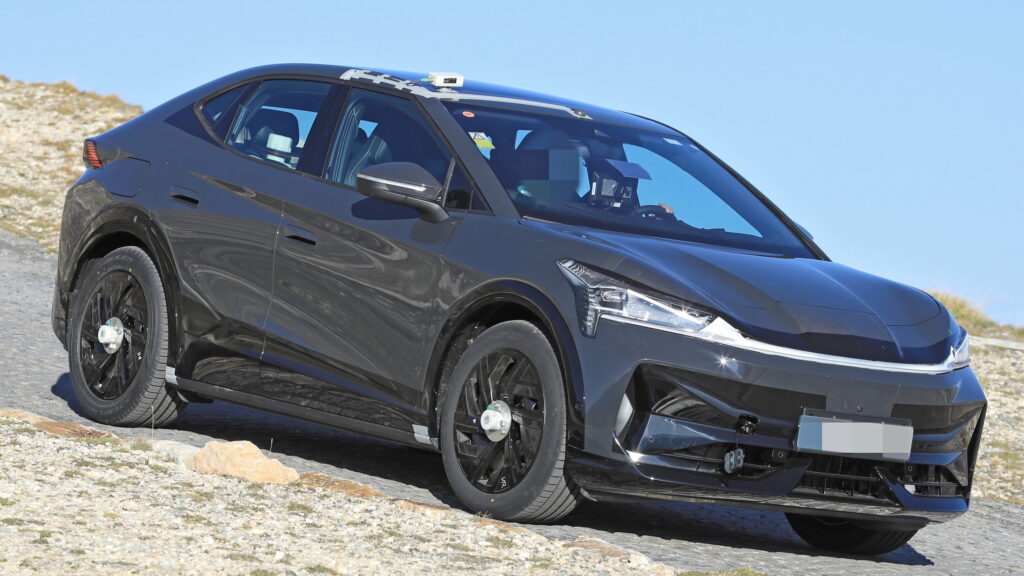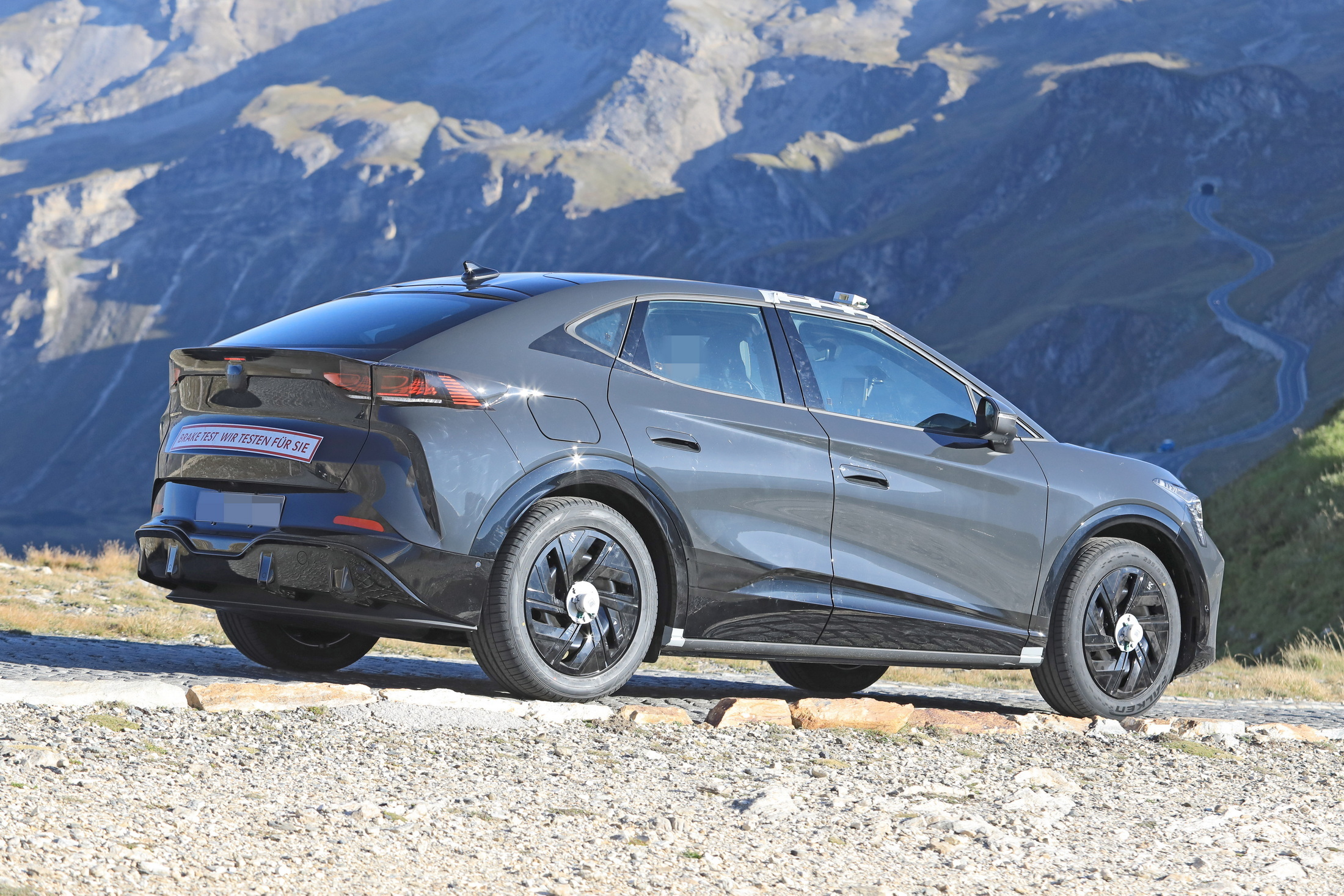Volkswagen is looking to recapture some of its sales swagger in China, and to do that, it will introduce a new brand for electric vehicles. Its first model will be a rebadged Cupra Tavascan, of which we have caught our first spy pictures.
According to a large sticker on the back of the test car, the model was spotted testing its brakes. As seen in the photos, the electric SUV shares the overall proportions and angularity of Cupra’s electric crossover coupe, but many of the smaller details differ.
For example, there are minor differences at the rear, where vertical folds in the sheet metal and the area around the license plate have been reworked. In addition, camouflage tape appears to cover a round badge, further suggesting that the vehicle will not be marketed as a Cupra in China, as has been previously reported.
Read: VW Looking To Sell The Cupra Tavascan In China Under A New Sub-Brand
Up front, the differences are more pronounced. While the hood looks familiar, there is more sheet metal in the section under the light bar. Additionally, the lower grille section is much smaller and is shaped differently than the Cupra‘s.
While we do not know specifically how VW will brand the new model, it will not be marketed as a Cupra. The automaker does not want to go through the expense and uncertainty of setting up a new fully-fledged brand in China, as it tried with Jetta which failed to make an impression on the market.
However, the people in charge of the new sub-brand will be working out of the province of Anhui, China. That is where the VW plant that builds the Tavascan has already been established, making it a convenient spot.
With the rebadged Tavascan and other models to come shortly thereafter, VW hopes that it can take on domestic brands like BYD and Nio, which have recently become bigger players in the world’s largest automotive market.
Based on the same platform as the VW ID.5, the Cupra Tavascan will be available with two powertrain options. The first features a rear-mounted electric motor that delivers 282 hp (210 kW/286 PS) and 402 lb-ft (545 Nm) of torque, while the second offers all-wheel-drive thanks to a pair of motors that combine to generate 335 hp (250 kW/340 PS) and 501 lb-ft (679 Nm) of torque. Either way, drivers have access to 77 kWh of battery power.



























